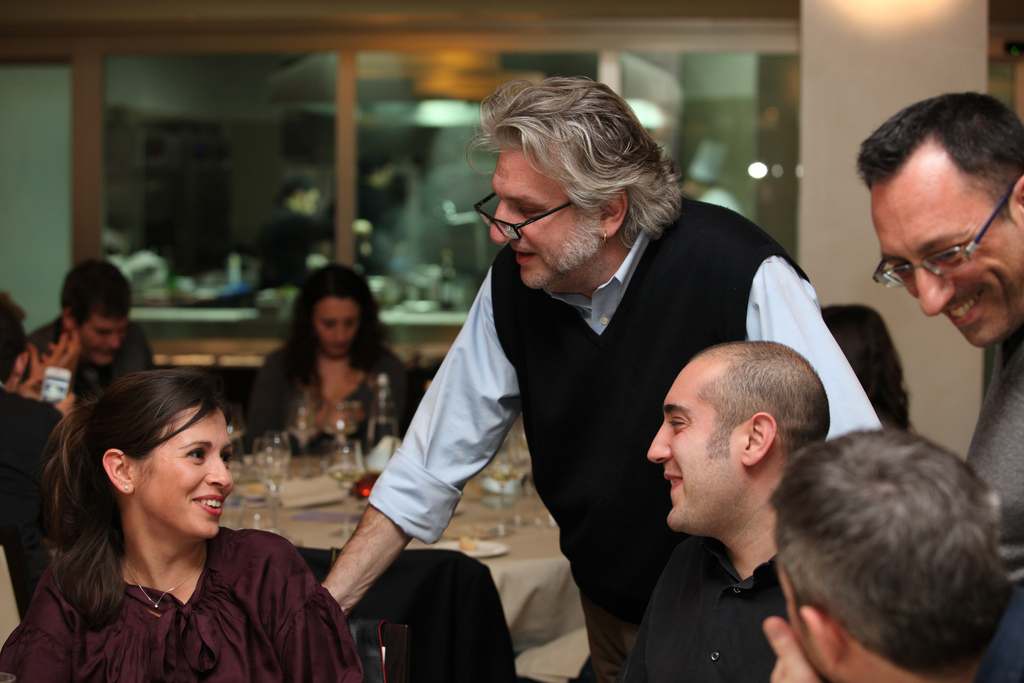Food and Drink: Dining Etiquette
Table Etiquette
In Italy, the seat of honor is in the middle of each long side of the table. Italians hold the knife in the right hand and the fork in the left, known as the Continental style. Hands remain visible on the table throughout the meal, and wrists rest on the table’s edge between bites. Finishing a meal can be signaled by placing the utensils parallel to one another on the right side of the plate. Formal meals in Italy consist of multiple distinct courses: antipasto (deli meat, olives, and cheese appetizers), soup, primi (pasta or risotto), cooked vegetables, secondi (meat entrée), salad, fruit, sweets, and a digestif (espresso or a small alcoholic beverage). Italians may truncate the meal to three courses during the workweek, but each course is still enjoyed separately. Dishes with long noodles, especially spaghetti, are never cut; instead, the noodles are twirled on the tongs of a fork and eaten in a single bite. Bread is used to sop up extra sauce or juices from the secondi plate, and is not eaten with other courses. Freshly grated cheese is offered for appropriate dishes, and is typically not eaten with fish or pizza.
Social Dimension of Dining
Eating is a social affair in Italy and meals are very leisurely to accommodate conversation. During the workweek, breakfast and lunch are often eaten at cafés, although some Italians return home from school or work for extended lunches. Sunday lunch is a family gathering held at home or in a local trattoria, and can last most of the afternoon. In a restaurant, a waiter will not bring a bill until it is requested, in order to give diners time to digest and talk. Sometimes this includes not clearing the table of empty plates. In Italy, it would be considered extremely rude to be rushed through a meal.
Article written for World Trade Press by Christine Kiilerich.
Copyright © 1993—2024 World Trade Press. All rights reserved.

 Italy
Italy 

